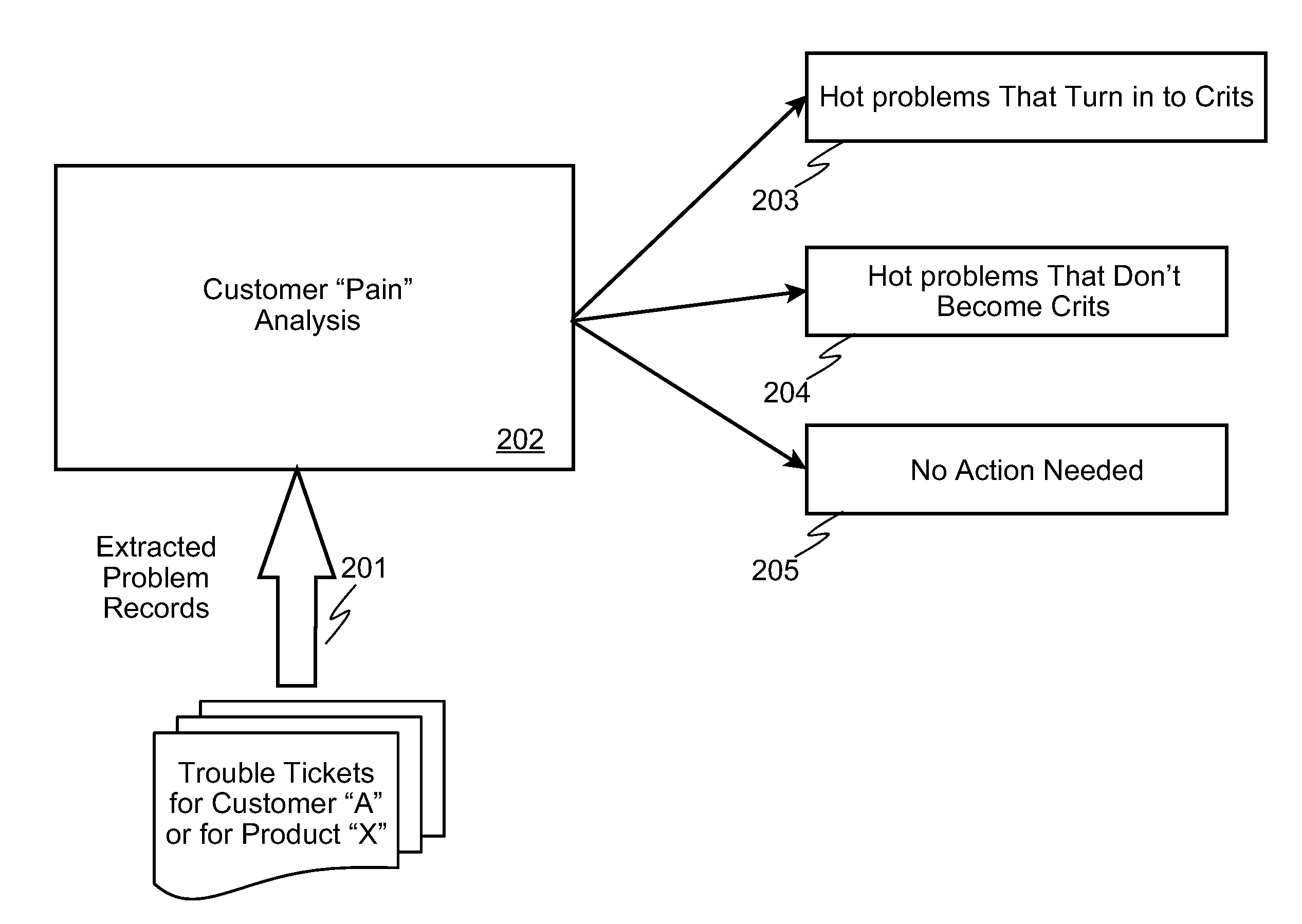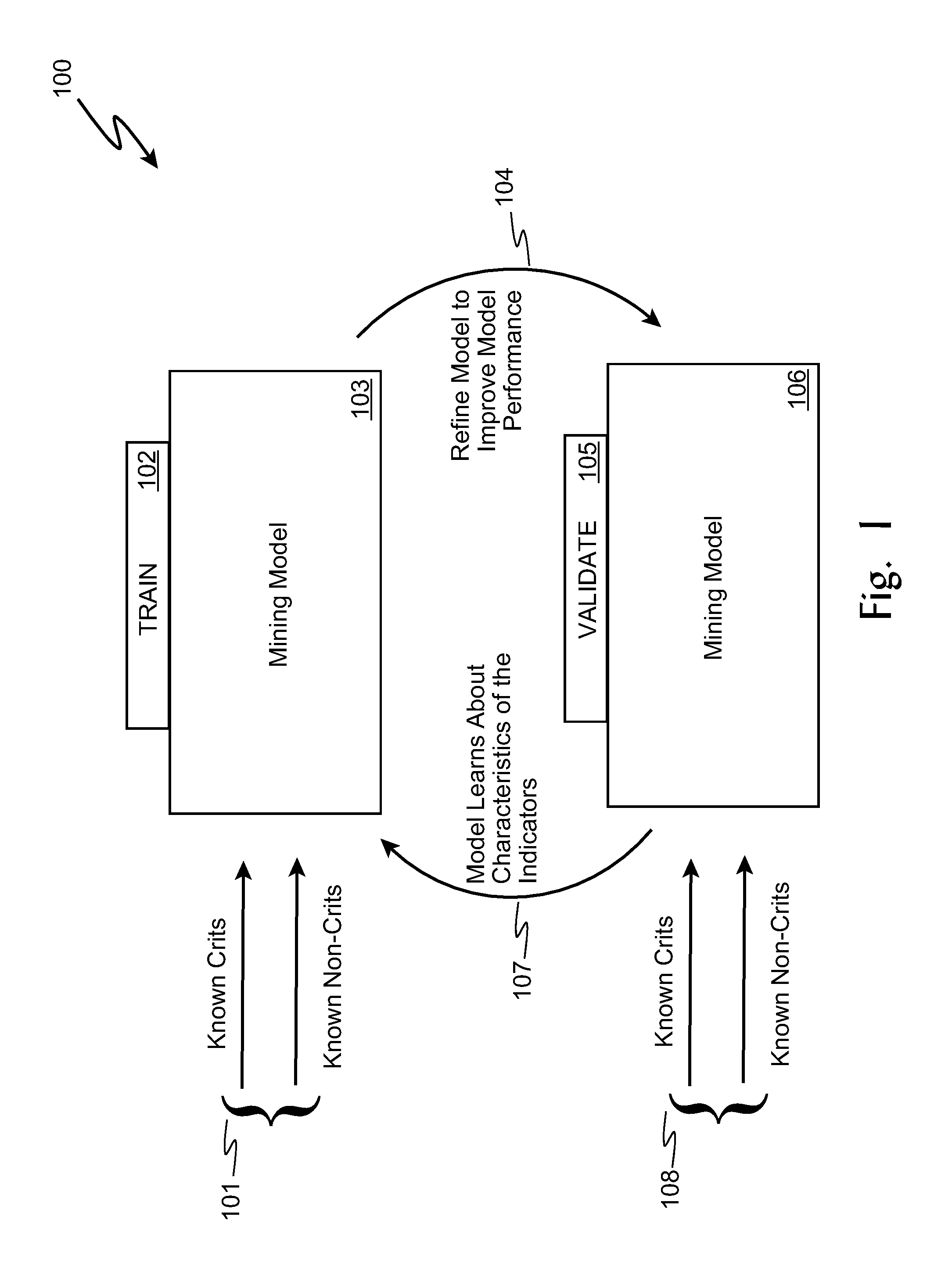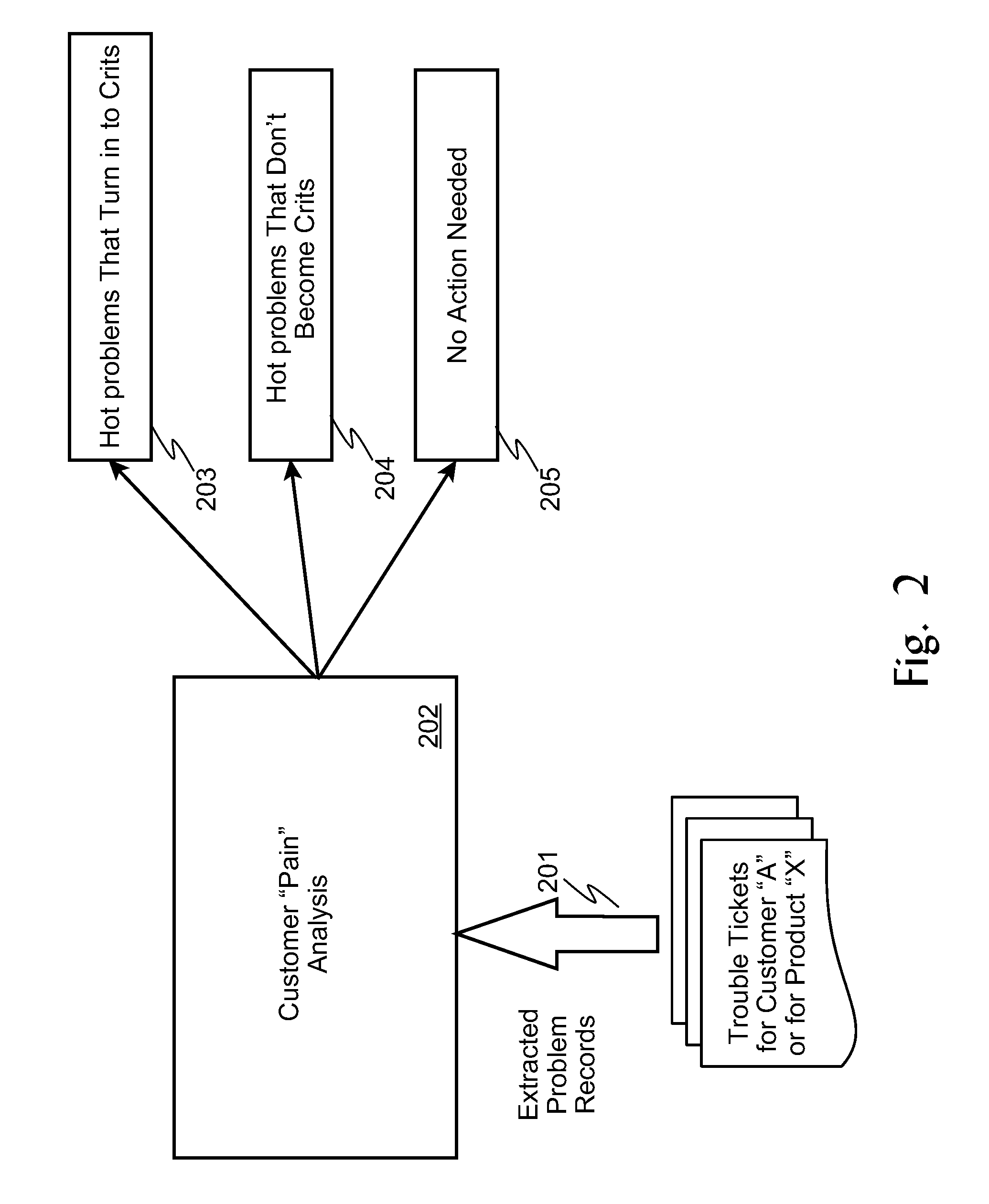Customer problem escalation predictor
a customer problem and escalation predictor technology, applied in the field of customer problem escalation predictor, can solve problems such as escalation, unresolved problems may be further escalated, and customers' exasperation of frustration
- Summary
- Abstract
- Description
- Claims
- Application Information
AI Technical Summary
Problems solved by technology
Method used
Image
Examples
##d embodiment
Protoyped Embodiment
[0025]A prototype of the following embodiment of the invention was created and tested against actual customer trouble tickets in a high-tech computer services company. As shown in FIG. 2, an overall functional view of the prototype which was implemented using a computer platform and one or more computer programs interfaced to a customer trouble ticket database included a number of trouble tickets (201) extracted from such a database for a particular customer which were analyzed (202) according to the customer's “pain” in the situation, yielding predictions of which trouble tickets would eventually escalate to a critical level (e.g. “crit”) (203), which trouble tickets that started as a hot problem would not eventually become a crit (204), and which trouble tickets would not become crits (205).
[0026]The following generalized process was developed, experimentally tested and verified on a real, historical set of trouble tickets which had been handled to completing, ...
PUM
 Login to View More
Login to View More Abstract
Description
Claims
Application Information
 Login to View More
Login to View More - R&D
- Intellectual Property
- Life Sciences
- Materials
- Tech Scout
- Unparalleled Data Quality
- Higher Quality Content
- 60% Fewer Hallucinations
Browse by: Latest US Patents, China's latest patents, Technical Efficacy Thesaurus, Application Domain, Technology Topic, Popular Technical Reports.
© 2025 PatSnap. All rights reserved.Legal|Privacy policy|Modern Slavery Act Transparency Statement|Sitemap|About US| Contact US: help@patsnap.com



